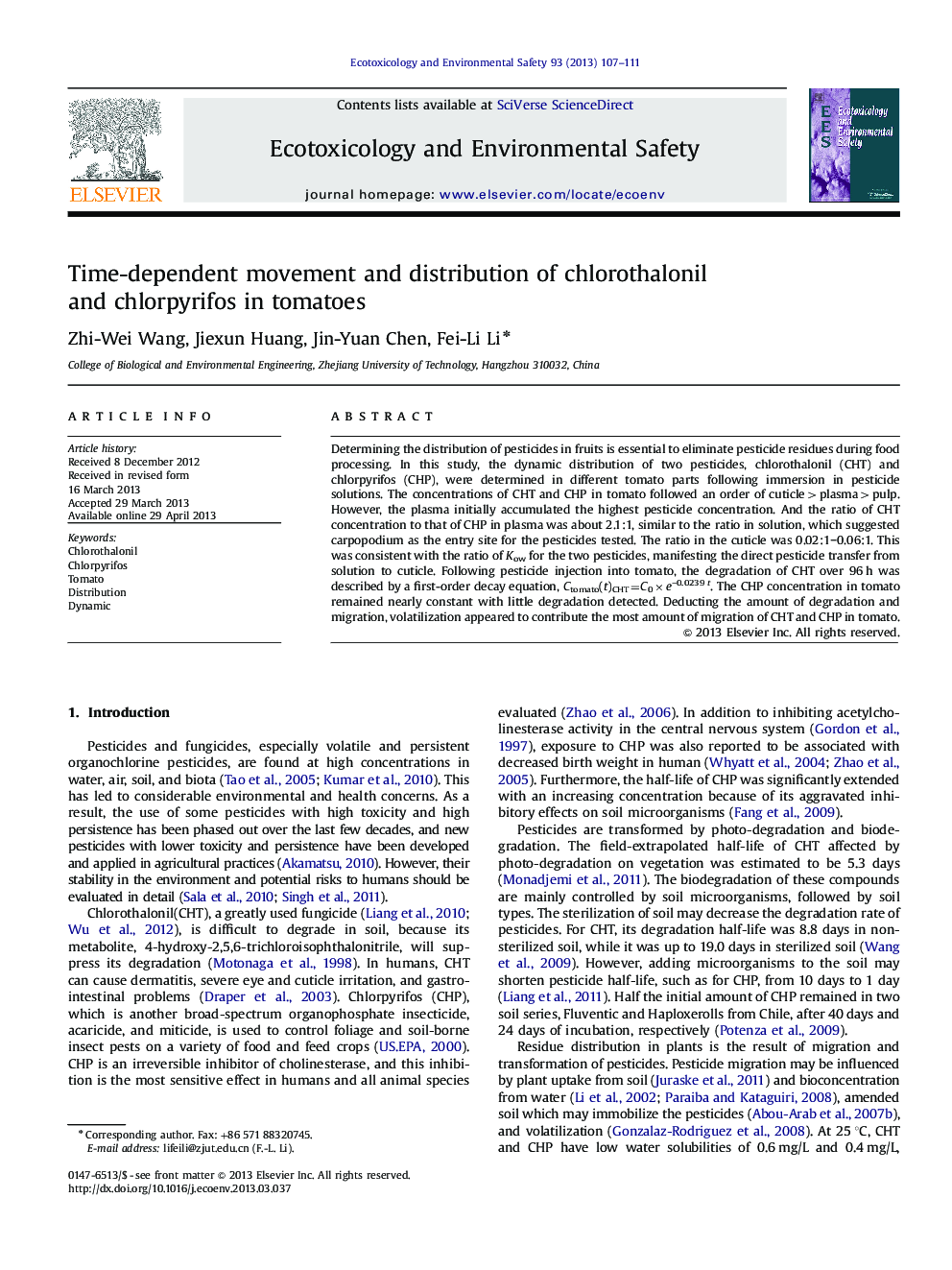| Article ID | Journal | Published Year | Pages | File Type |
|---|---|---|---|---|
| 4420273 | Ecotoxicology and Environmental Safety | 2013 | 5 Pages |
•Pesticides were analyzed in parts of tomato after immersion in the pesticide solutions.•The concentrations of CHT and CHP followed an order of cuticle>plasma>pulp.•The carpopodium was the main entry site for the pesticides in plasma.•The degradation of CHT was described by a first-order decay equation.•Volatilization contributed the most amount of migration of pesticides in tomato.
Determining the distribution of pesticides in fruits is essential to eliminate pesticide residues during food processing. In this study, the dynamic distribution of two pesticides, chlorothalonil (CHT) and chlorpyrifos (CHP), were determined in different tomato parts following immersion in pesticide solutions. The concentrations of CHT and CHP in tomato followed an order of cuticle>plasma>pulp. However, the plasma initially accumulated the highest pesticide concentration. And the ratio of CHT concentration to that of CHP in plasma was about 2.1:1, similar to the ratio in solution, which suggested carpopodium as the entry site for the pesticides tested. The ratio in the cuticle was 0.02:1−0.06:1. This was consistent with the ratio of Kow for the two pesticides, manifesting the direct pesticide transfer from solution to cuticle. Following pesticide injection into tomato, the degradation of CHT over 96 h was described by a first-order decay equation, Ctomato(t)CHT=C0×e−0.0239 t. The CHP concentration in tomato remained nearly constant with little degradation detected. Deducting the amount of degradation and migration, volatilization appeared to contribute the most amount of migration of CHT and CHP in tomato.
